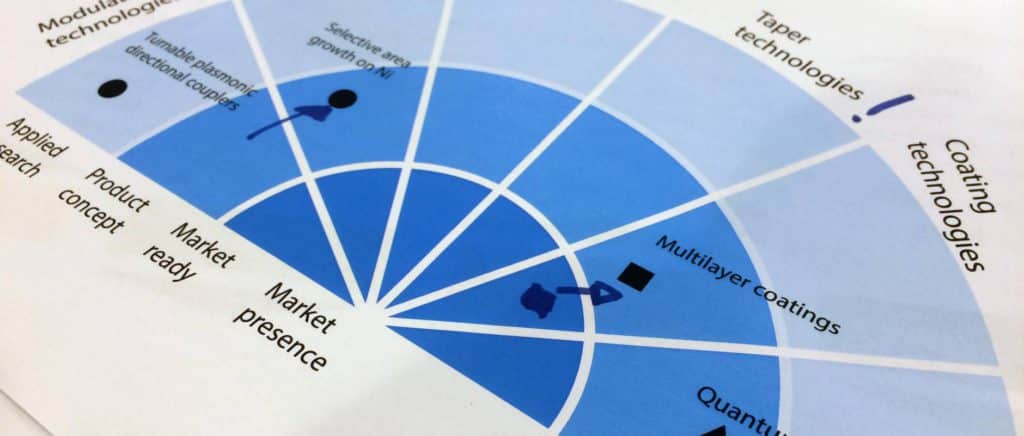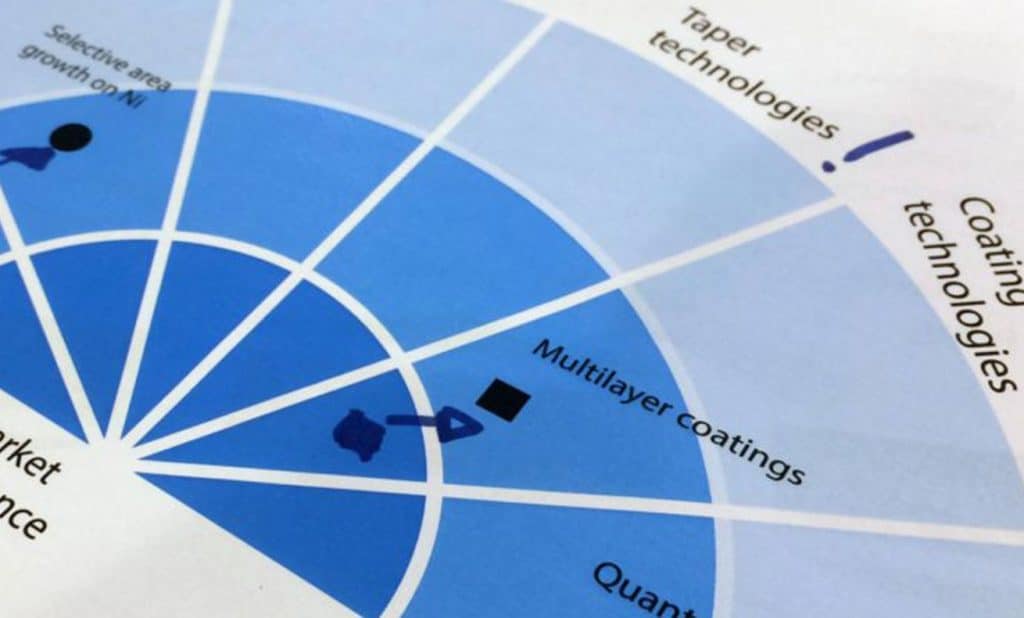Technology management step 1: identifying enabling tech
- May 11, 2017
In our latest post, we introduced the concept of technology management – the proactive alignment of technology adoption with business strategy that enables true industry leaders to stay ahead of the pack. It’s no walk in the park, however, but a journey of exploration. The first step that you have to take is to identify which new developments will help you tackle future challenges and give your business that ‘wow’ factor that keeps customers coming back for more.
The two axes of strategic technology identification
Traditionally, companies have focused on the development of new products, services and technologies to drive their business forward, making technology the first axis of tech identification. However, more and more businesses are using market and business drivers, the second axis, as the starting points for their quests. In this case, a company knows where it wants to go, but not which technologies will get it there – and it is critical to create a clear product vision that will serve as a compass on your quest for enabling technologies. This vision will be more focused on relevant features than on the technologies capable of realizing them.
Case 1: you know what you don’t know
Starting from your product vision, you can set clear targets in your search for enabling technologies. In this case, you already know what you would like it to deliver. Let’s take the food industry, for example. Today’s food firms are interested in their customers’ and regulators’ hot topics – ecofriendliness and ‘clean label’, to name just a couple. To kick-start the tech identification process, a food company might begin with the question, “Which technologies could help us make the same products, but more ecologically and using more familiar ingredients?”, clearly linking market drivers to technology identification. These technologies can be found by looking across industries and into emerging technologies that may be on the edge of breaking into your industry.
Case 2: you don’t know what you don’t know
While you can build a product vision starting from the key drivers, certain technologies that you are not even aware of could enhance your imagination in building the product vision. As a result, you have to keep your radar on constant alert to identify emerging technologies, potentially by closely monitoring research activity within yours or adjacent domains. The technologies can trigger your product vision and push technologies into your next generation products.

While companies of previous decades invested heavily in creating new technology for its own sake and used their creations to drive business, today’s companies are taking a different approach. Increasingly, firms are interested in wide-angle, cross-industry ‘tech maps’ to identify both emerging tech as well as new applications of ‘old’ technology. Additive manufacturing, for example, isn’t recent; it’s just where it’s being used that is changing, unlocking portals to brave new worlds of possibility. The key to this approach is to deeply understand your customer and its drivers, and then find out which other industries are trying to solve similar issues by identifying linking principles and technologies.
When product affects production
While tech evolutions open up new opportunities, on the flip side, they impact existing solutions and the product and production layers of a company are not always lined up properly. Customers are now demanding the production of smaller, customized batches of products and faster delivery. If the production process of a company is more geared toward bulk orders, it will have to find new ways of building flexibility into manufacturing techniques to meet these new demands – i.e. through robotics, 3D printing, etc.
Companies need to understand how the product will impact its own production. The technology mapping layer shouldn’t just be focused on features or characteristics that will be integrated into products, but also into the way that you serve your market.
Telling a complete story
To sum up, technology identification can start from scratch, or from looking at how your products and services can evolve and then spotting technologies that make that evolution possible. Bear in mind, however, that your discoveries in either case may actually lead you to reshape your products and services – and/or the way you bring them to market. Don’t zoom in too closely on technology to the point that you lose sight of the business side of the story, as each is an enabler of the other.
Here at Creax, not only are we the multi-industry gurus of high-potential research and creative thinking, we can aid you in mapping out emerging technologies that are right on your horizon. Find out how we can assist you in identifying your next big thing and then help you decide what to do with it by giving us a shout and subscribing to our blog.










